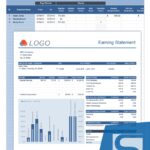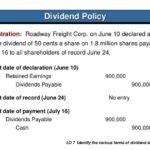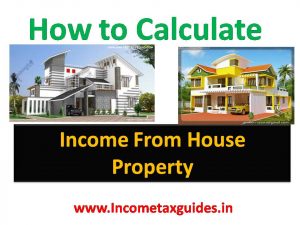
For property for which you used a half-year convention, the depreciation deduction for the year of the disposition is half the depreciation determined for the full year. You refer to the MACRS Percentage Table Guide in Appendix A to determine which table you should use under the mid-quarter convention. The machine is 7-year property placed in service in the first quarter, so you use Table A-2 . The furniture is 7-year property placed in service in the third quarter, so you use Table A-4. Finally, because the computer is 5-year property placed in service in the fourth quarter, you use Table A-5.

Depreciation Methods
If the partner disposes of their partnership interest, the partner’s basis for determining gain or loss is increased by any outstanding carryover of disallowed section 179 expenses allocated from the partnership. Step 2—Using $1,180,000 as taxable income, XYZ’s hypothetical post closing trial balance definition section 179 deduction is $1,160,000. However, to determine whether property qualifies for the section 179 deduction, treat as an individual’s family only their spouse, ancestors, and lineal descendants and substitute «50%» for «10%» each place it appears.

Credits & Deductions
The allowance applies only for the first year you place the property in service. The allowance is an additional deduction you can take after any section 179 deduction and before you figure regular depreciation under MACRS for the year you place the property in service. Thus, the amount of any 2023 disallowed section 179 expense deduction attributable to qualified section 179 real property will be reported on line 13 of Form 4562. This disallowed deduction amount is shown on line 13 of Form 4562.
Provides investors with a good picture of asset use
The formula determines the expense for the accounting period multiplied by the number of units produced. In accounting terms, depreciation is considered a non-cash charge because it doesn’t represent an actual cash outflow. The entire cash outlay might be paid initially when an asset is purchased, but the expense is recorded incrementally for financial reporting purposes. That’s because assets provide a benefit to the company over an extended period of time. But the depreciation charges still reduce a company’s earnings, which is helpful for tax purposes. Instead of realizing the entire cost of an asset in year one, companies can use depreciation to spread out the cost and match depreciation expenses to related revenues in the same reporting period.
Fixed Asset Purchase Cost Assumptions
The basis for depreciation of MACRS property is the property’s cost or other basis multiplied by the percentage of business/investment use. For a discussion of business/investment use, see Partial business or investment use under Property Used in Your Business or Income-Producing Activity in chapter 1. Reduce that amount by any credits and deductions allocable to the property. The following are examples of some credits and deductions that reduce basis. Once you elect not to deduct a special depreciation allowance for a class of property, you cannot revoke the election without IRS consent. A request to revoke the election is a request for a letter ruling.
- You use the amount you carry over to determine your section 179 deduction in the next year.
- The number of years over which an asset is depreciated is determined by the asset’s estimated useful life, or how long the asset can be used.
- In 2023, Beech Partnership placed in service section 179 property with a total cost of $2,940,000.
Double-Declining Balance (DDB)
The General Depreciation System (GDS) is the most common method for calculating MACRS. This formula will give you greater annual depreciation at the beginning portion of the asset’s useful life, with gradually declining amounts each year until you reach the salvage value. After an asset is purchased, a company determines its useful https://www.simple-accounting.org/how-to-raise-funds-for-a-new-nonprofit/ life and salvage value (if any). Then, the asset cost is depreciated over time based on its useful life. In effect, this accounting treatment “smooths out” the company’s income statement so that rather than showing the $100k expense entirely this year, that outflow is effectively being spread out over 5 years as depreciation.
Remember that while you can use sum-of-the-years and units of production depreciation for your own books, you will have to use either straight-line or double declining depreciation methods when calculating depreciation for tax purposes. Tax depreciation follows a system called MACRS, which stands for modified accelerated cost recovery system. MACRS is a form of accelerated depreciation, and the IRS publishes tables for each type of property. Work with your accountant to be sure you’re recording the correct depreciation for your tax return. Sum of the years’ digits depreciation is another accelerated depreciation method. It doesn’t depreciate an asset quite as quickly as double declining balance depreciation, but it does it quicker than straight-line depreciation.
In this example, we can say that the service given by the weighing machine in its first year of life was $200 ($1,000 – $800) to the company. Leasehold properties, patents, and copyrights are examples of such assets. Estimated useful life is the number of years of service the business expects to receive from the asset. Estimated residual value is also known as the salvage value or scrap value.
If you use your item of listed property 30% of the time to manage your investments and 60% of the time in your consumer research business, it is used predominantly for qualified business use. Your combined business/investment use for determining your depreciation deduction is 90%. Tara Corporation, with a short tax year beginning March 15 and ending December 31, placed in service on October 16 an item of 5-year property with a basis of $1,000.
The election must generally cover all property in the same property class that you placed in service during the year. However, the election for residential rental property and nonresidential real property can be made on a property-by-property basis. If you elect to claim the special depreciation allowance for any specified plant, the special depreciation allowance applies only for the tax year in which the plant is planted or grafted. The plant will not be treated as qualified property eligible for the special depreciation allowance in the subsequent tax year in which it is placed in service. The total cost you can deduct each year after you apply the dollar limit is limited to the taxable income from the active conduct of any trade or business during the year. Generally, you are considered to actively conduct a trade or business if you meaningfully participate in the management or operations of the trade or business.

If you make this choice, you figure the gain or loss by comparing the adjusted depreciable basis of the GAA with the amount realized. For Sankofa’s 2023 return, the depreciation allowance for the GAA is figured as follows. As of December 31, 2022, the depreciation allowed or allowable for the three machines at the New Jersey plant is $23,400. The depreciation allowance for the GAA in 2023 is $25,920 [($135,000 − $70,200) × 40% (0.40)].
Your $25,000 deduction for the saw completely recovered its cost. You figure this by subtracting your $1,135,000 section 179 deduction for the machinery from the $1,160,000 cost of the machinery. Off-the-shelf computer software is qualifying property for purposes of the section 179 deduction. This is computer software that is readily available for purchase by the general public, is subject to a nonexclusive license, and has not been substantially modified.
For 3-, 5-, 7-, or 10-year property used in a farming business and placed in service after 2017, in tax years ending after 2017, the 150% declining balance method is no longer required. However, it does not reflect any reduction in basis for any special depreciation allowance.. You own a rental home that you have been renting out since 1981. If you put an addition on the home and place the addition in service this year, you would use MACRS to figure your depreciation deduction for the addition. The GDS recovery periods for property not listed above can be found in Appendix B, Table of Class Lives and Recovery Periods.
However, it is logical to report $10,000 of expense in each of the 7 years that the truck is expected to be used. Depreciation is listed as an expense on your income statement since it represents part of the asset cost allocated to the period. It’s not an asset or a liability itself, but rather an accounting tool used to measure the change in value of an asset. Sum-of-years-digits is https://www.business-accounting.net/ another accelerated depreciation method that gives greater annual depreciation in an asset’s early years. If you use a vehicle or piece of equipment exclusively for business, you can claim depreciation on that asset. However, if you drive a car for work and for personal use, you can only claim depreciation on the business portion of your tax return (for example 60% of the cost).
4134, Low Income Taxpayer Clinic List, at IRS.gov/pub/irs-pdf/p4134.pdf. TAS works to resolve large-scale problems that affect many taxpayers. If you know of one of these broad issues, report it to TAS at IRS.gov/SAMS. Payments of U.S. tax must be remitted to the IRS in U.S. dollars. Go to IRS.gov/Payments for information on how to make a payment using any of the following options. If you have questions about a tax issue; need help preparing your tax return; or want to download free publications, forms, or instructions, go to IRS.gov to find resources that can help you right away.
